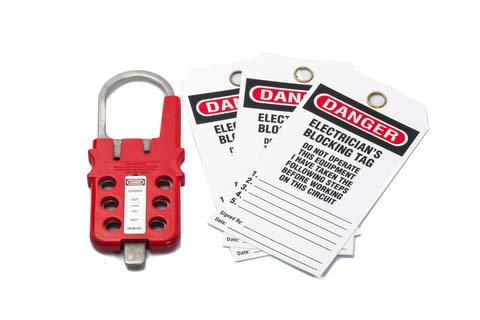Lockout/Tagout LOTO Procedures for Control of Hazardous
 Accidents at the workplace can cause serious injury or worse, so there are many regulations and safety measures put in place for prevention. One such standard is Lockout/Tagout, drafted by the Canadian Standards Association Group and endorsed by the Standards Council of Canada for the purpose of controlling hazardous energy. Proper lockout and tagging out equipment means it is safely (and legally) separated from its power source, most often for maintenance. First, keep reading for SET Safety’s guide to how the process works and why it is significant– then contact us for more details on our online “Lockout/Tagout in the Workplace” course.
Accidents at the workplace can cause serious injury or worse, so there are many regulations and safety measures put in place for prevention. One such standard is Lockout/Tagout, drafted by the Canadian Standards Association Group and endorsed by the Standards Council of Canada for the purpose of controlling hazardous energy. Proper lockout and tagging out equipment means it is safely (and legally) separated from its power source, most often for maintenance. First, keep reading for SET Safety’s guide to how the process works and why it is significant– then contact us for more details on our online “Lockout/Tagout in the Workplace” course.
WHAT IS LOCKOUT/TAGOUT?
The term “lockout/tagout” or LOTO broadly describes the systematic method of shutting down an energy source and its attached device. It also covers the method of bringing the system back online, prioritizing employee safety throughout the entire process. Steps include notifying other workers, releasing stored or residual energy, locking down the switch with double-redundant padlocks and drafting a tag with all relevant details.
WHY IS LOCKOUT/TAGOUT IMPORTANT?
As stated above, injury prevention is the principal goal of most safety standards and should be the first priority of every workplace. Lockout/tagout is just that– it ensures the safe handling, repair and maintenance of utilities, equipment and machinery. Failing that, it is a legal standard that determines liability in any case where the hazardous energy is released (whether or not serious injury occurs).
As you can see locking and tagging out a system or tool is absolutely vital to workplaces with such equipment. It is a serious matter, but efficient and modern safety training has achieved better results than in-class alternatives. Furthermore, SET Safety’s online “Lockout/Tagout in the Workplace” course can be completed in approximately 75 minutes, depending on the learner.
Contact SET Safety today–you or your business can recapture time and money lost to lengthy seminars or in-house training overhead.
